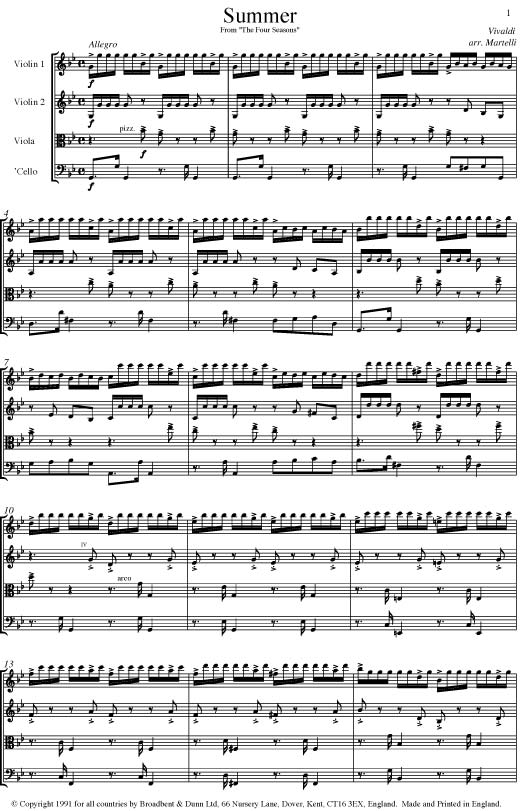


We feel the chill north winds course through the home Rising, hasten on across the ice lest it cracks up. Then turn abruptly, slip, crash on the ground and, We tread the icy path slowly and cautiously, To run, stamping one's feet every moment,Ĭontented days while the rain outside pours down. In addition to these sonnets, Vivaldi provided instructions such as "The barking dog" (in the second movement of "Spring"), "Languor caused by the heat" (in the first movement of "Summer"), and "the drunkards have fallen asleep" (in the second movement of "Autumn").Ī new translation of the sonnets into English by Armand D'Angour was published in 2019. Regardless of the sonnets' authorship, The Four Seasons can be classified as program music, instrumental music intended to evoke something extra-musical, and an art form which Vivaldi was determined to prove sophisticated enough to be taken seriously. Though it is not known who wrote the accompanying sonnets, the theory that Vivaldi wrote them is supported by the fact that each sonnet is broken into three sections, each neatly corresponding to a movement in the concerto. There is some debate as to whether the four concertos were written to accompany four sonnets or vice versa. 8, RV 269, "Spring" ( La primavera)Īll performed by the Wichita State University Chamber Players, an ensemble of the Wichita Symphony Orchestra Structure Title page of Vivaldi's Cimento dell'Armonia e dell'Invenzione, which included The Four Seasons Vivaldi divided each concerto into three movements (fast–slow–fast), and, likewise, each linked sonnet into three sections. The music is elsewhere similarly evocative of other natural sounds. For example, in the middle section of "Spring", when the goatherd sleeps, his barking dog can be heard in the viola section. Vivaldi took great pains to relate his music to the texts of the poems, translating the poetic lines themselves directly into the music on the page. The concerti therefore stand as one of the earliest and most detailed examples of what would come to be called program music-in other words, music with a narrative element. Unusually for the period, Vivaldi published the concerti with accompanying sonnets (possibly written by the composer himself) that elucidated what it was in the spirit of each season that his music was intended to evoke. They were a revolution in musical conception: in them Vivaldi represented flowing creeks, singing birds (of different species, each specifically characterized), a shepherd and his barking dog, buzzing flies, storms, drunken dancers, hunting parties from both the hunters' and the prey's point of view, frozen landscapes, and warm winter fires. The inspiration for the concertos is not the countryside around Mantua, as initially supposed, where Vivaldi was living at the time, since according to Karl Heller they could have been written as early as 1716–1717, while Vivaldi was engaged with the court of Mantua only in 1718. Though three of the concerti are wholly original, the first, "Spring", borrows patterns from a sinfonia in the first act of Vivaldi's contemporaneous opera Il Giustino.

The Four Seasons is the best known of Vivaldi's works. They were published in 1725 in Amsterdam, together with eight additional concerti, as Il cimento dell'armonia e dell'inventione ( The Contest Between Harmony and Invention). These were composed around 1718−1720, when Vivaldi was the court chapel master in Mantua. The Four Seasons ( Italian: Le quattro stagioni) is a group of four violin concertos by Italian composer Antonio Vivaldi, each of which gives musical expression to a season of the year. Set of four violin concertos by Antonio Vivaldi Antonio Vivaldi (engraving by François Morellon de La Cave, from Michel-Charles Le Cène's edition of Vivaldi's Op.


 0 kommentar(er)
0 kommentar(er)
